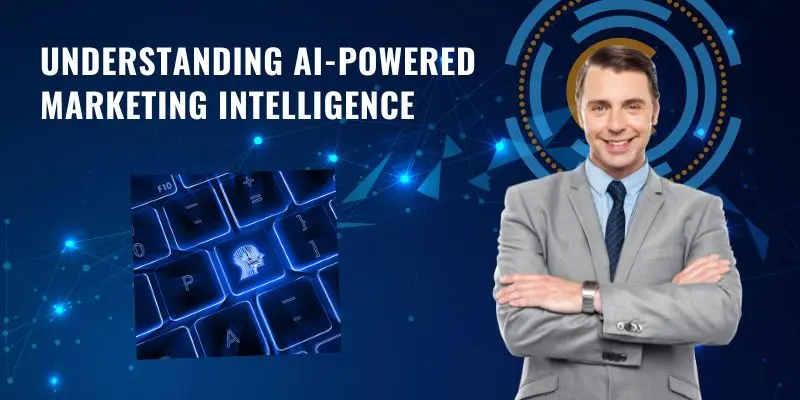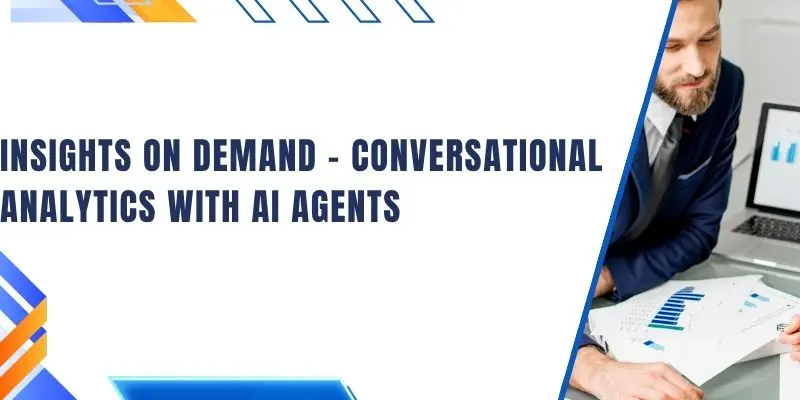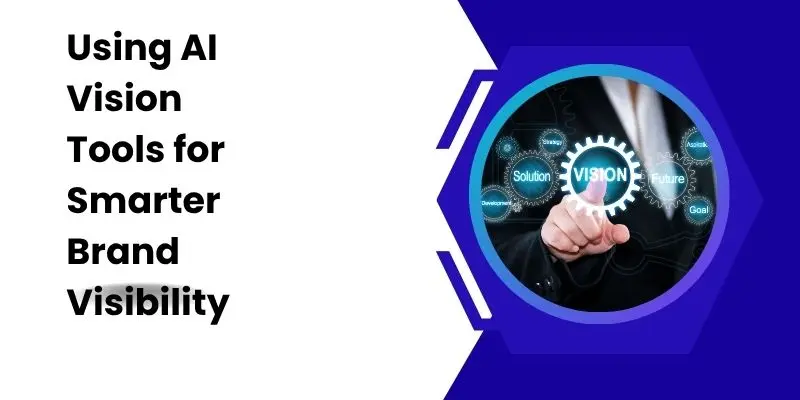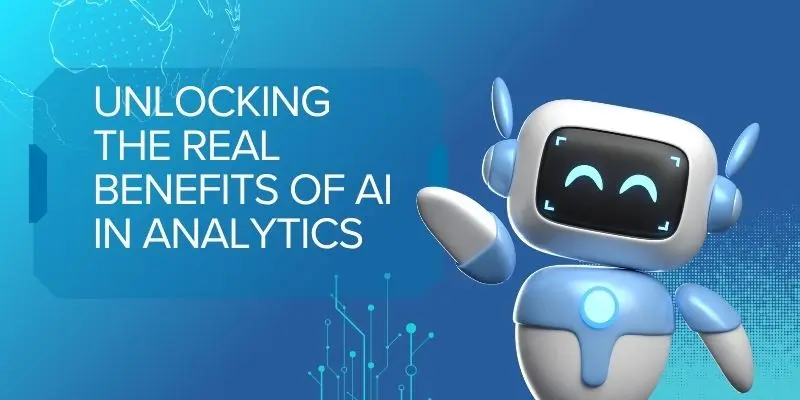AI for Marketing Analytics – How Smart Brands Turn Data into Profit in This Year
Published: 27 Jun 2025
In my journey as a digital strategist, I’ve seen how AI for marketing analytics can completely transform the way marketers approach their daily operations. It’s not just about analyzing large amounts of data – it’s about knowing how to act on it. Using AI-driven tools, we no longer settle for surface-level tasks like basic reporting. Instead, we sift through vast datasets of customer behavior, optimize content, and uncover actionable insights that help shape more effective strategies. This kind of automation truly revolutionizes the way we collect, interpret, and respond to marketing data.
What excites me most is how AI analytics can now inform smarter decision-making and directly drive ROI. I’ve utilized platforms that enable the exploration of complex data analytics models and discovered powerful use cases that were previously out of reach for most teams. These systems ride the high-tech wave, equipping teams with the tools to provide smarter answers faster. Whether you’re refining ad targeting or improving content timing, AI helps remove the guesswork and align your marketing efforts with measurable success.
Understanding AI-Powered Marketing Intelligence
From my experience in digital strategy, I’ve seen marketing analytics evolve from manual spreadsheets to smart systems powered by artificial intelligence. Today, AI doesn’t just help with the analysis of marketing data – it completely reshapes how businesses think about decision-making.

By integrating AI analytics into marketing operations, brands gain a competitive edge in a very competitive landscape. These tools don’t just process static reports – they uncover deep patterns within large datasets, enabling marketers to make more proactive strategy choices instead of being reactive.
What’s powerful is how AI can be incorporated at every stage, from Data Collection to Optimization. We now automate the aggregation of structured and unstructured data across multiple channels, maintaining completeness and consistency. Data Analysis, predictive models, and machine learning help identify behavior trends, segment audiences with precision, and forecast future outcomes. Then come AI-driven insights that let us refine strategies in real-time, adjusting campaigns to reach maximum ROI. I often rely on AI assistants to simplify complex workflows, such as attribution modeling, A/B testing, and personalized messaging. It’s a full-cycle upgrade from traditional methods, making analytics not only more dynamic but also more scalable, impactful, and rooted in strong business intelligence.
AI Use Cases in Marketing Analytics
When I first began using AI for marketing analytics in client campaigns, what surprised me most was how effectively it helped businesses collect, analyze, and act on their data. One of the most powerful use cases I’ve seen is customer segmentation powered by machine learning (ML). These systems can transform vast amounts of customer data into precise, actionable groups. For instance, AI can identify customer segments based on predicted behaviors like the likelihood of repeat purchases or risk of churn. This makes decision-making faster and sharper. By integrating AI-powered segmentation into campaign management tools, marketers are now able to target both high-value and at-risk customers using personalized content, improving their marketing spend without wasting resources.
The depth goes even further. With psychographic segmentation, AI looks at personality traits, values, interests, and lifestyles, helping tailor messaging and offers to each audience. Event-triggered segmentation allows marketers to respond to reactions from major sales or product launches, gaining insight into how different segments interact with brand activities. There’s also cross-sell and upsell segmentation, where AI detects which customers might want additional products or upgrades, so teams can tailor campaigns for receptive segments. Over time, ML keeps continuously learning from campaign outcomes, helping refine customer experiences, boost conversion rates, and ensure your tool delivers accurate results. I’ve used Improvado, which automates aggregation, normalization, and validation of disparate marketing data across multiple channels and platforms, delivering a clean, unified dataset. This makes your data profiles more complete and enriched with behavioral insights from all relevant touchpoints – and when your data is clean, your segmentation becomes truly efficient and scalable.
Insights on Demand – Conversational Analytics with AI Agents
In my experience working with data-heavy marketing teams, one of the most time-consuming tasks was waiting for answers from analysts or the IT department. But with recent AI advancements, platforms like Improvado AI Agent have completely transformed that. Now, we can communicate directly with our data through natural language bots, getting actionable insights in real-time.

These AI-powered tools are built on custom large language models and text-to-SQL technology, which means I can ask even complex questions in plain English, and the system will query data, translate it to SQL, and return clear findings – usually in under 10 seconds.
I’ve used this kind of conversational analytics to optimize performance across various campaigns by simply asking about market trends, customer behavior, or even detailed metrics like CTR, CPC, and ROAS. From budget pacing by comparing spend over different timeframes to cross-channel analytics across multiple platforms, it’s become easy to assess and act on marketing results. These tools help us test hypotheses, handle ad-hoc analytics requests, verify data consistency, and improve productivity without needing technical expertise or SQL querying. In fact, during a recent case study, we saw a 30% increase in team efficiency after using automation to replace manual data handling. It’s a smarter way to do data exploration, drive strategy, and deliver tailored advice using one unified analytics solution.
Smarter Sentiment Detection Using NLP and LLMs
Many marketers I’ve worked with struggle with the challenge of deciphering real customer opinions during product launches or after brand campaigns. Traditional survey methods can give direct insights, but they’re often time-consuming and miss the raw, spontaneous sentiments shared across digital platforms like social media, customer reviews, or discussion forums. That’s where Natural Language Processing (NLP) steps in – able to sift through large volumes of text, identify tone and sentiment at scale, and pick up on opinion trends and general mood much faster than older systems.
But not all social sentiment analysis platforms are perfect. They sometimes misinterpret complex human expressions like irony, slang, or culturally specific expressions, leading to inaccurate interpretations and incorrect assessments in global markets. That’s why more teams are now using Large Language Models (LLMs) such as ChatGPT, which come with tools like a chat interface, sentiment analysis plugins, and API access. Because they’re trained on a vast corpus of text data, LLMs offer enhanced sentiment analysis by recognizing the broader context of a statement. They can also be fine-tuned and customized for specific industries, topics, or niche markets, allowing brands to improve accuracy for particular types of products. When integrated into a broader AI ecosystem, these tools combine various data sources for a more holistic understanding of customer opinions, going far beyond what standalone tools can offer.
Using AI Vision Tools for Smarter Brand Visibility
When I first helped a client manage their digital assets across multiple platforms, we quickly realized that manual tracking of their brand’s visual assets was impossible. The volume of content being shared and the number of channels involved made it clear that we needed AI marketing analytics tools to automate both detection and analysis.

That’s when we integrated the OpenAI Vision API, an advanced AI system designed to analyze images and videos, identifying everything from logos and brand colors to product placements and activities. With some development work, we smoothly connected the tool to their digital asset management system, ensuring data flowed seamlessly into their content repositories.
Once live, the API handled real-time analysis of user-generated content, social media, and online advertising platforms, helping us stay ahead of any misuse or inconsistency. We were able to set parameters that aligned with their brand identity, and immediately received alerts and reports on visual presence, whether it was unauthorized use of a logo or low consistency in brand portrayal. Even better, we used the API for competitor monitoring, drawing out competitive insights by comparing visibility. It also uncovered emerging trends through trend analysis, which became valuable for optimizing marketing campaigns and tailoring creatives to match the target audience. These actionable insights didn’t just ensure brand compliance—they shaped real-time creative decisions backed by data.
Smarter Voice Search Optimization with AI
When I first started building SEO strategies for clients, we focused heavily on traditional keywords. But the search landscape changed quickly – especially in the U.S., where a growing number of consumers now use voice assistants for their queries, sometimes daily, weekly, or even monthly. That shift brought the need to optimize content for voice search using a more conversational approach that reflects natural speech patterns. This is where artificial intelligence steps in – it can analyze large volumes of voice search data, detect patterns in how users phrase queries, and provide insight to help shape a brand’s voice search narrative and boost brand visibility in a voice-driven world.
What helped me most was using AI applications like voice search analytics powered by AI algorithms. These tools study the tone, phrasing, and semantics of spoken searches to uncover real user intent. With Natural Language Processing (NLP), AI can interpret the nuances in conversational language, exactly how people speak in their daily lives. It allows you to generate human-like text that feels like dialogue, creating content that converses and truly resonates. I also use semantic search optimization to improve how well the context and relationship between words match the user’s actual need. Combining this with automated A/B testing, checking keyword density, structure, and format, has greatly improved discoverability and helped me classify search intent – from informational to navigational, transactional, and local intents – so we can deliver more targeted content using AI analytics tools.
Unlocking the Real Benefits of AI in Analytics
From my work helping businesses build smarter marketing analytics systems, I’ve seen how AI-ing your data processes can completely shift your results. The integration of AI doesn’t just make things faster – it streamlines operations, automates routine tasks, and unveils opportunities hidden in vast amounts of data.

With AI analytics solutions, you can sift through vast datasets in just a fraction of the time, turning rapid analysis into crucial insights delivered instantly. That means more informed choices, less guesswork, and fewer decisions based on intuition alone.
Using AI-driven analytics tools, we’ve crafted marketing strategies grounded in solid data, leading to more effective, targeted marketing campaigns. AI helps with personalization too – it understands customer preferences and delivers ads and promotions tailored to individual tastes, boosting customer satisfaction. Plus, automating data analysis adds cost-efficiency, allowing teams to streamline, avoid ineffective marketing strategies, and focus on strategic tasks. AI also excels at predicting future trends by learning from historical data, offering foresight that keeps you proactive ahead of upcoming shifts. Unlike humans, machines are less prone to errors, especially when handling massive data volumes, ensuring minimized errors, faster insights, and smoother, streamlined operations. When used with the right approach, this AI revolution empowers smarter, data-driven insights that guide long-term strategic and informed decisions, unlocking unparalleled growth and success.
Building a Smart Strategy with AI
When I first introduced AI into our marketing analytics approach, the key wasn’t just picking flashy AI tools – it was about aligning them with real business needs. To build an AI-driven marketing strategy, we started by defining clear objectives. We focused on improving customer engagement, automating campaign management, and predicting purchasing behavior. These goals gave our marketing department direction during the technological transformation. But AI only works if your data infrastructure is ready. So, we made sure our data systems could handle the volume, variety, and velocity that AI analytics requires. With tools like Improvado, we were able to streamline the process by aggregating, cleaning, and harmonizing our data, laying a strong foundation for actionable information, and reducing the need for manual effort.
The next big step was to select the right tools – from AI CRM tools to predictive analytics, chatbots, and generative AI – choosing the best fit for our strategy made a big difference. But we didn’t stop there. We knew effective solutions come from people too. So we worked to train and upskill teams, building strong collaboration between marketing, data science, and IT departments. Through continuous dialogue, we turned ideas into practical tools that could address real business challenges and deliver measurable outcomes. We also made sure to iterate and optimize, using feedback loops to adjust our campaigns, refine them with every cycle, and adapt to fast-moving market trends and shifting consumer behaviors. That’s what helped us unlock the full potential of AI models and foster a deeper partnership between technology and human expertise.
Conclusion
So, guys, in this article, we’ve covered AI for marketing analytics in detail. From real-time insights to predictive modeling, it’s clear that AI is no longer optional – it’s essential for staying competitive. If you’re just starting, I highly recommend exploring one AI tool that fits your current marketing stack and testing it with a small campaign. You’ll be surprised how quickly the data works in your favor. Start now – leverage AI to turn your marketing data into real business growth.
FAQs
The main types include machine learning, natural language processing (NLP), predictive analytics, and computer vision. Each of these helps marketers analyze large data sets, understand customer behavior, and automate tasks. You can use them individually or combine them for better results.
Not exactly. Machine learning is a type of AI that learns from data and improves over time. AI is the broader concept, while machine learning is just one powerful tool within it.
Predictive analytics uses past data to forecast future trends or outcomes. Unlike other AI types that may just analyze or automate, predictive analytics focuses on helping you plan in marketing.
Yes! Natural Language Processing (NLP) reads and interprets text data like reviews, comments, or surveys. It helps you spot trends, sentiment, and keywords that matter to your audience.
Computer vision is an AI type that understands images and videos. In marketing, it can recognize logos, products, or brand placement across social media or ads.
Automation isn’t a type of AI by itself, but it often uses AI technologies to make things faster and smarter. For example, AI can automate A/B testing or email personalization based on audience behavior.
Start with predictive analytics or basic machine learning tools. These are often easier to use and can immediately improve your marketing results by showing trends and customer preferences.
Absolutely. Many advanced platforms combine NLP, machine learning, and automation to give you deeper insights. This combo works great for customer segmentation, sentiment analysis, and content performance.
Not always. Many beginner-friendly tools use AI in the background, so you don’t need coding skills or a big budget. Start small and scale as you learn what works.
That can happen if the data is messy or the model isn’t trained well. Always make sure your data is clean and regularly updated, and try adjusting your AI settings or goals to improve accuracy.

- Be Respectful
- Stay Relevant
- Stay Positive
- True Feedback
- Encourage Discussion
- Avoid Spamming
- No Fake News
- Don't Copy-Paste
- No Personal Attacks

- Be Respectful
- Stay Relevant
- Stay Positive
- True Feedback
- Encourage Discussion
- Avoid Spamming
- No Fake News
- Don't Copy-Paste
- No Personal Attacks





